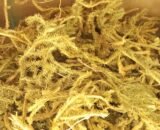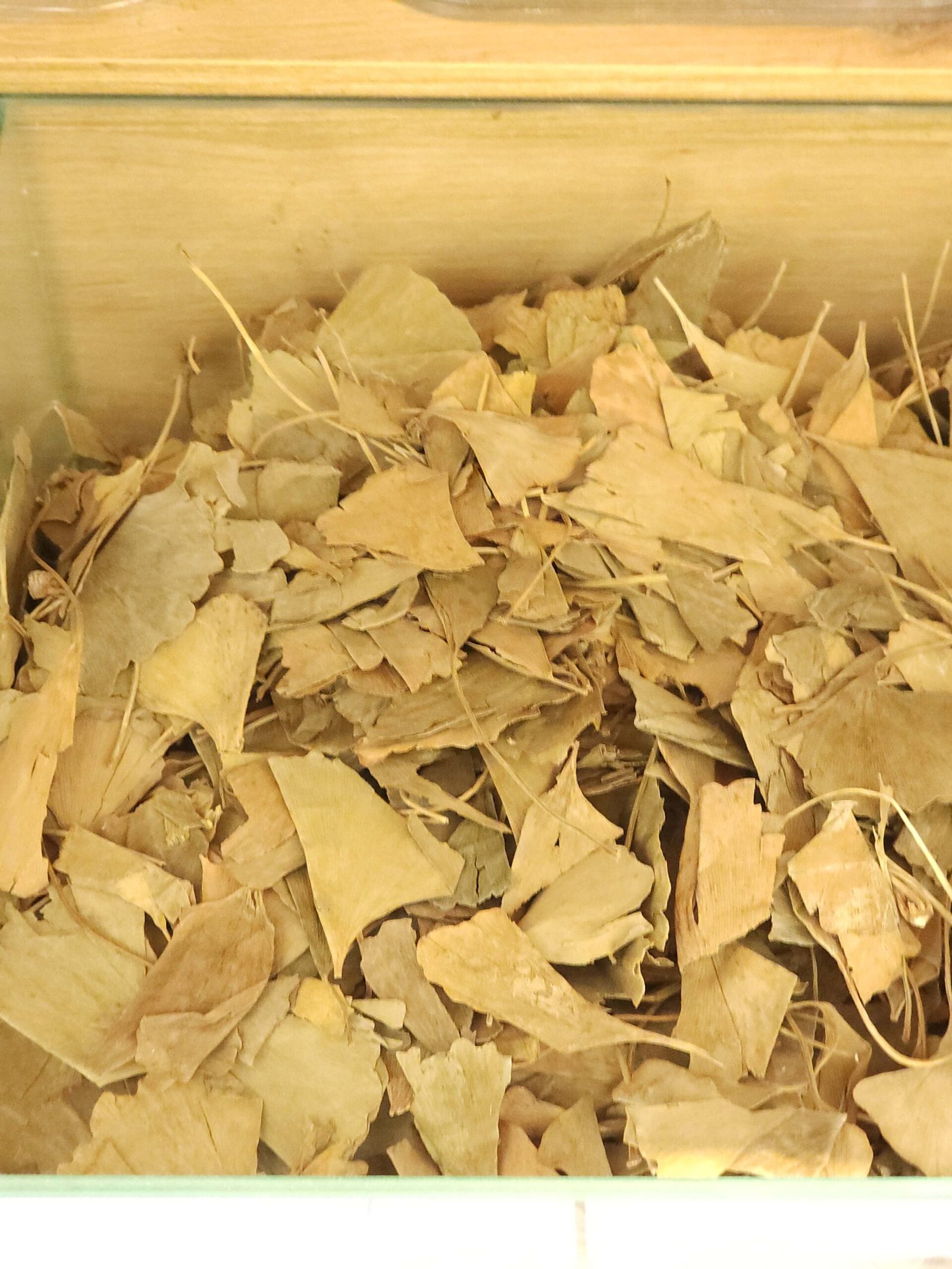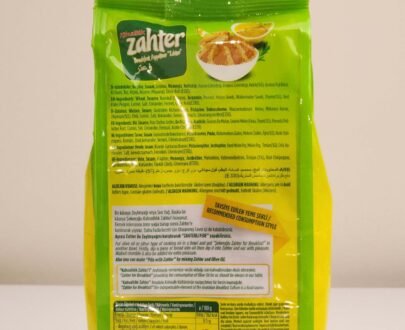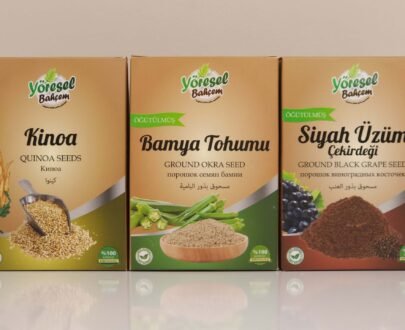Ginkgo Biloba Dry Herb use in treating blood disorders and memory problems
Consult your herbalist before use.
Ginkgo has a long history of use in treating blood disorders and memory problems. It is best known today as a way to potentially keep your memory sharp. Laboratory studies have shown that ginkgo improves blood circulation by opening blood vessels and making blood less sticky. It is also an antioxidant.
Ginkgo biloba (Chinese and Japanese 銀杏) is a completely unique tree with no close species or analogues surviving today. It is evaluated by botanists in a separate section (Ginkgophyta) within the plant kingdom (Plantea). In this section, there is a single class (Ginkgoopsida), a single order within the class (Ginkgoales), a single family within the order (Ginkgoaceae), a single genus within the family, Ginkgo, and a single species in this genus, Ginkgo biloba. Although it was placed in the Spermatophyta or Pinophyta sections in the past, today it has been concluded that the above-mentioned definitions are more appropriate. It is one of the best examples of known living fossil species. Ginkgo biloba is a species of tree referred to as gymnospermae, meaning that its seeds are not protected by a fruit (opposite of gymnosperm: angiospermae).
Healing properties
The extract of Ginkgo leaves contains flavonoid glucosides, and ginkgolides (Ginkgo extract-based products) are increasingly used in pharmaceuticals. Current scientific research indicates that gingko extract has absolute benefits in Alzheimer’s (Memory Loss, Forgetfulness) disorders, strengthening memory, preventing dizziness and increasing mental concentration, and studies on its other possible benefits are ongoing.
Although Ginkgo is frequently added to energy drinks, due to its cost, the amount used in the drinks is very low and does not create a noticeable effect. The ginkgo-related benefits sometimes cited on energy drink labels are usually just a placebo effect.
It is recommended for people of older ages to use it.
Side effects
Some undesirable effects of ginkgo may occur in people with blood circulation disorders or in people who take high doses of drugs that slow down clotting, such as aspirin. Additionally, it is not recommended for use by people taking monoamine oxidase inhibitor (MAOI) antidepressants or pregnant women. Side effects may manifest themselves as increased bleeding, gastrointestinal disturbances, nausea, diarrhea, headache and restlessness. If such side effects occur, the person using ginkgo should immediately reduce the dosage (40 to 240 mg per day). If side effects persist, ginkgo use should be stopped.
The daily dosage may be increased for capsule or tablet forms (non-extract) produced from Ginkgo biloba leaves. The Ginkgo biloba capsule or tablet used here will contain;
Is it an extract (for medicinal purposes)?
Is it an extract (for food purposes)?
Leaf (for food purposes)? is of great importance.
Ginkgo biloba is thought to have lived in the same period as the dinosaurs, and there is no other tree like it. You will be amazed at what you hear about this tree, which stands out with its interesting features among the unique beauties offered by nature!
From the moment of existence, human beings have felt a great curiosity for every object they can perceive. Of course, nature, humanity’s most ancient companion from the beginning to the present, was one of the first areas where this curiosity was directed. So much so that nature still continues to preserve its mystery for humanity. Efforts to understand nature, which offers a different miracle in every part, are never an empty effort!
One of the unique parts of this extraordinary order is the ginkgo biloba plant. This tree species, which can live for an average of a thousand years or even longer, is studied in a unique group within botany. Because there is nothing else like it! So, what are the features of the ginkgo biloba tree that make it remarkable? All the information you want about this tree is waiting for you in the rest of the article!
1. WHAT IS GINKGO BILOBA?
It is possible to briefly define Ginkgo biloba as a deciduous tree species that varies between 20 and 50 meters in height. The veined and fan-shaped leaves are among the most prominent features of this tree. The Turkish naming of the tree, whose Chinese name is ginkgo biloba, is according to various regions;
temple tree,
silver apricot,
elephant ear,
girl hair and
It may change to Chinese fan pine.
Perhaps the most surprising feature of Ginkgo biloba that makes it interesting is that this tree is a living fossil! According to researchers, the history of this tree dates back to 270 million years ago, to the Permian Age. This means that the ancestors of ginkgo biloba share the same period with dinosaurs!
2. WHERE DOES GINKGO BILOBA GROW?
It is known that the homeland of Ginkgo biloba is Asia. Ginkgo biloba is especially found in China, Japan and Korea, where broad-leaved forests dominate. This tree species, which grew only within the borders of the Asian continent for many years, was first discovered and spread worldwide in the 17th century. According to records; German naturalist Engelbert Kaempfer, who went on an expedition from Russia to Asia between 1683 and 1693, encountered the ginkgo biloba tree in Japan. Examining this species, which he saw for the first time, Kaempfer notes that the tree is a useful species. And thus begins the international journey of the ginkgo biloba species. In the ongoing process, ginkgo biloba began to be grown in Europe in the 1730s and in America in 1784.
3. HOW TO USE GINKGO BILOBA?
Ginkgo biloba produces yellowish-white, plum-like fruits in certain seasons, and a volatile oil is obtained from these fruits. But the most important part of this tree is its leaves, which contain flavonoid glycosides. It is also known that ginkgo biloba leaves are a strong source of vitamin A and potassium. After Ginkgo biloba leaves are collected, they are subjected to a series of processes. And in this way, an extract is prepared from which the beneficial substances in its content are selected. The obtained ginkgo biloba extract is available in tablet, capsule or liquid forms. Ginkgo biloba extract is frequently preferred as an active ingredient, especially in the pharmaceutical and cosmetic industries.
4. HOW TO CONSUME GINKGO BILOBA?
Ginkgo biloba has multiple consumption options tailored to need. In addition to being consumed as a food supplement, capsule and tablet forms are generally preferred when used with the recommendation of a doctor. In these forms, ginkgo biloba and ginseng are usually offered together. Apart from this, herbal tea can also be made from ginkgo biloba leaves. Moreover, making ginkgo biloba tea is very simple! You can prepare your tea by steeping a pinch of ginkgo biloba leaves in a glass of hot water for just five minutes. Ginkgo biloba tea can be drunk once or twice a day on an empty or full stomach. However, as with all herbal teas, it is of great importance for those with chronic diseases to consult a doctor before consuming this tea.
5. WHY SHOULD GINKGO BILOBA BE USED?
Although the name of Ginkgo biloba has just begun to be heard in our country, this plant has been known and used in other countries for a very long time. In fact, ginkgo biloba has gained an important place in alternative medicine worldwide. “But what is ginkgo biloba used for?” You must be wondering. To explain this briefly, gingko biloba is a multifunctional natural support for the body with its antioxidants and strong effect on the cellular level.
6. WHAT IS THE CONSUMPTION AMOUNT OF GINKGO BILOBA?
While Ginkgo biloba provides many benefits if consumed in appropriate doses, it can also cause undesirable effects in overdose. While the daily dose of Ginkgo biloba for adults is recommended in the range of 80-240 grams, it is especially emphasized that this dose should not exceed the recommended amount for the relevant product.










Customer reviews
Reviews
There are no reviews yet.
Write a customer review